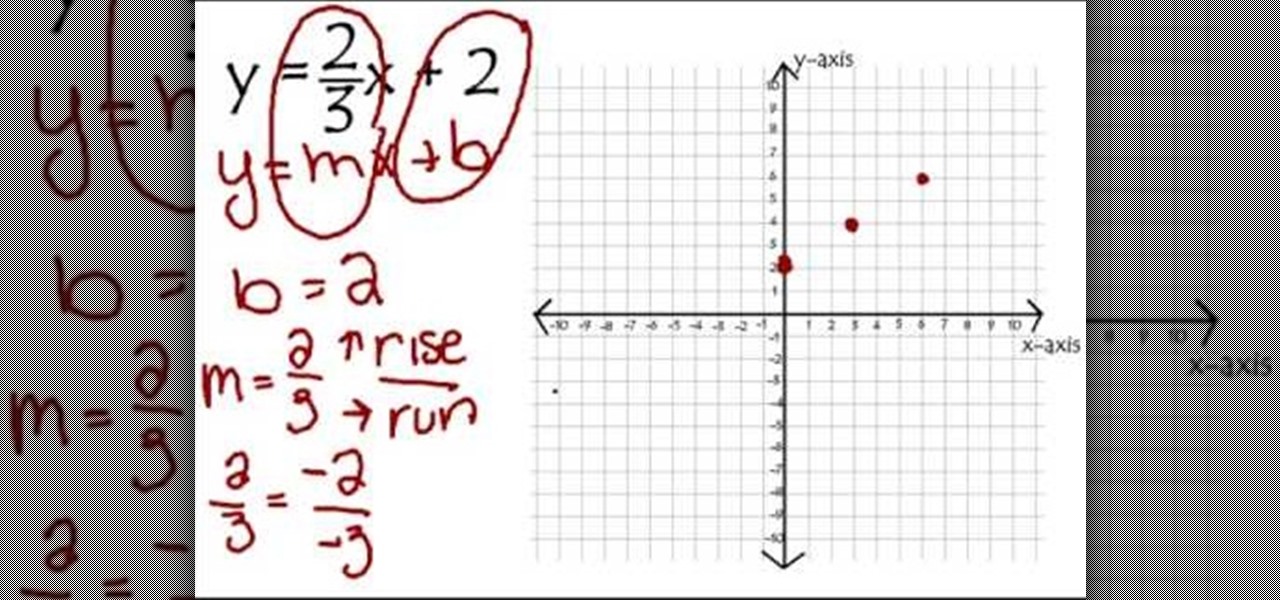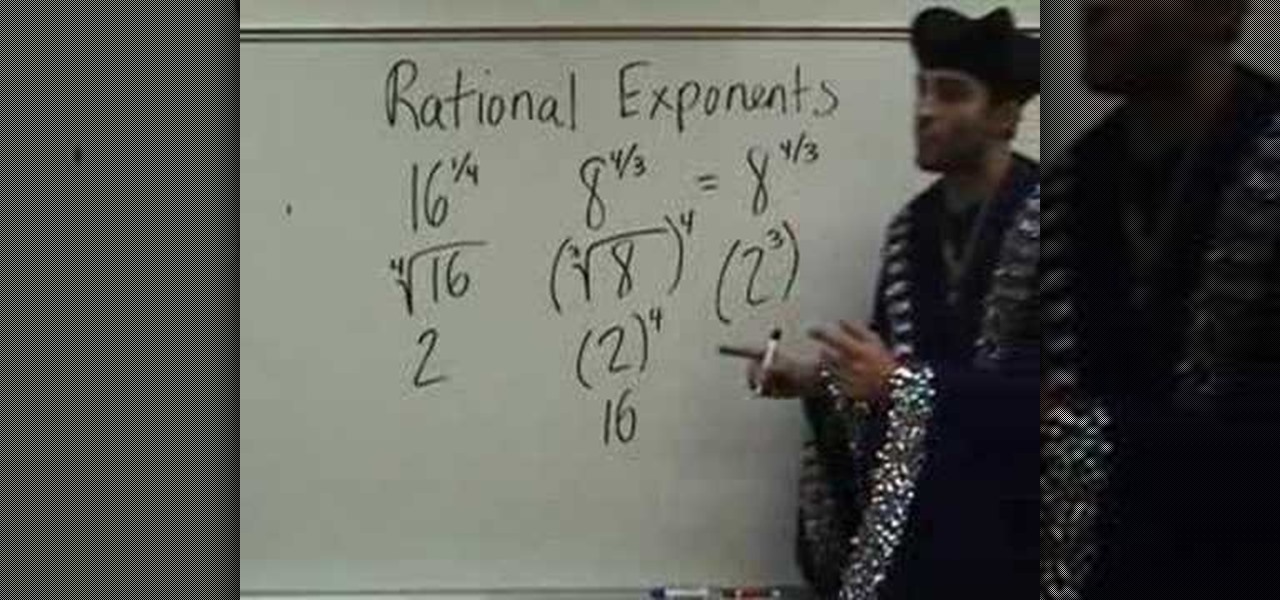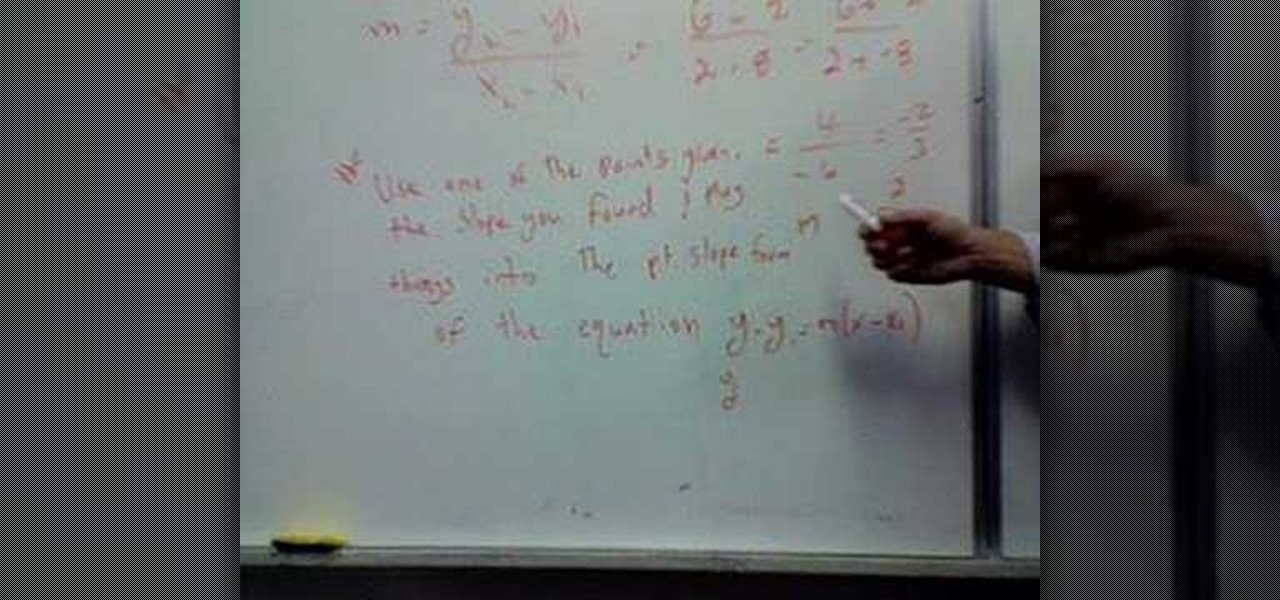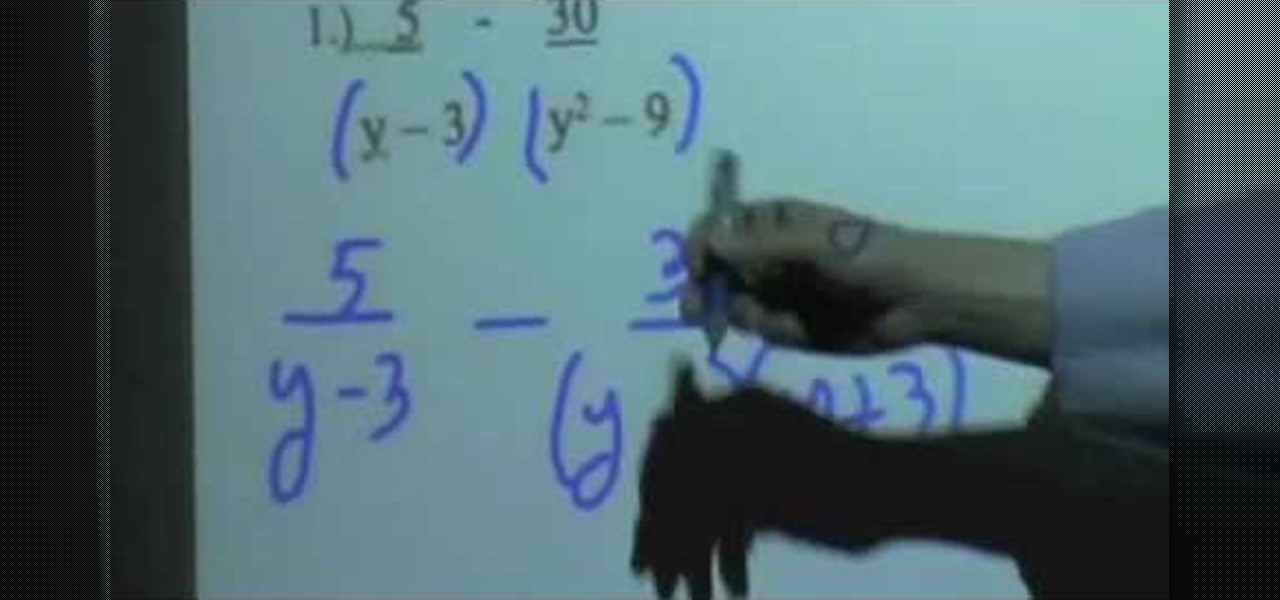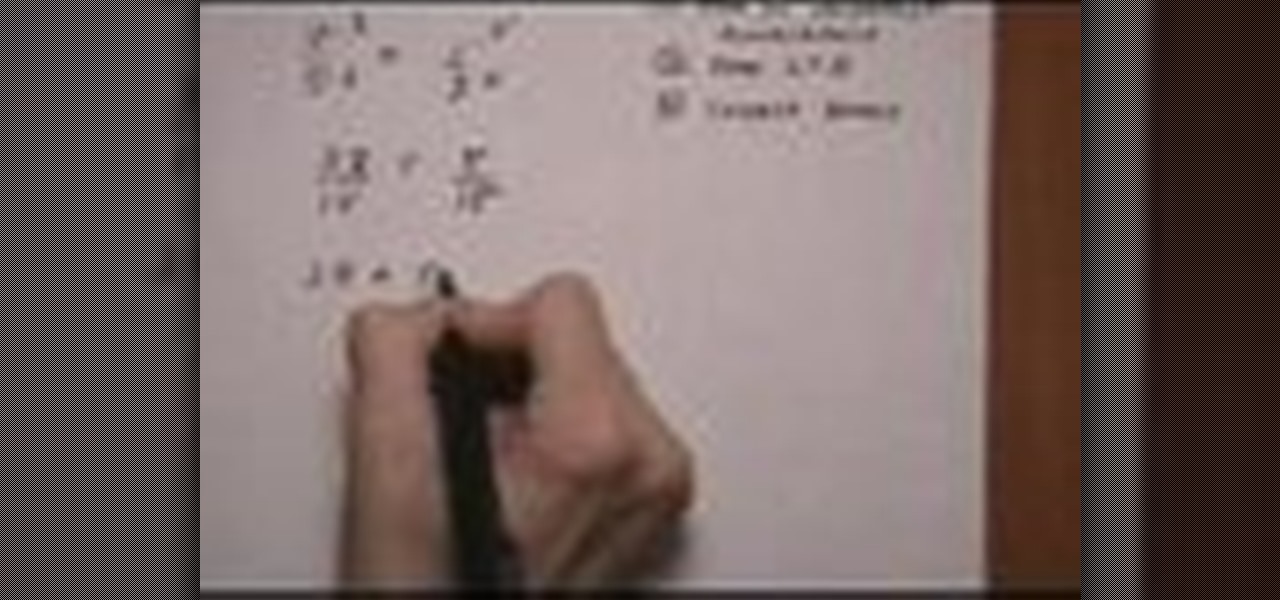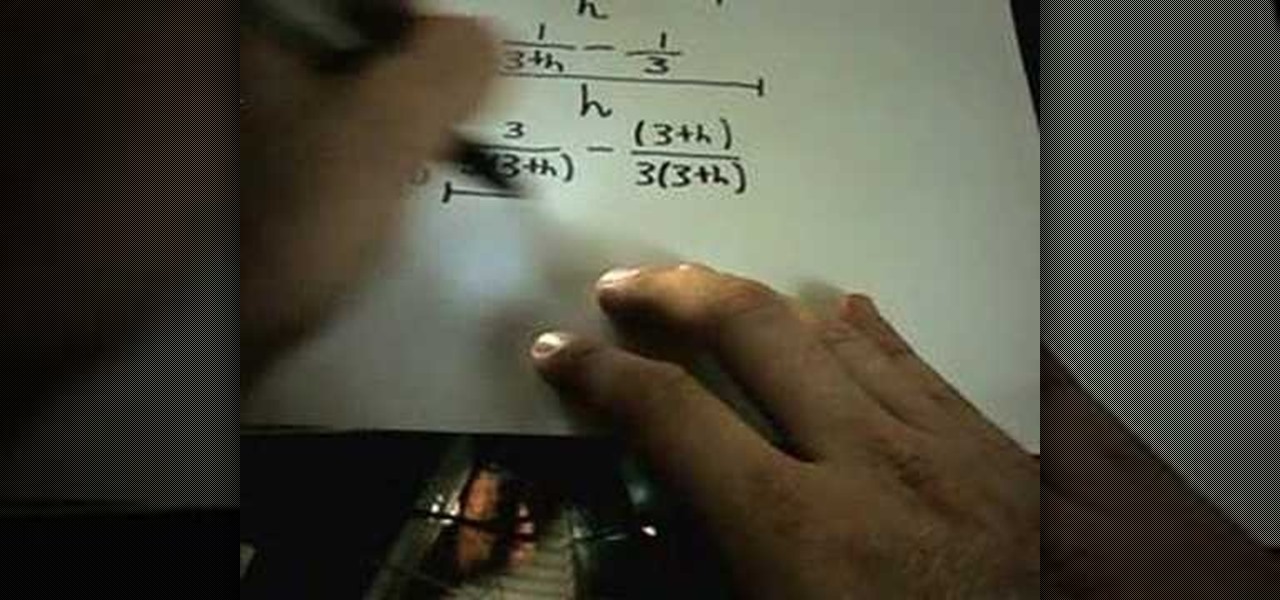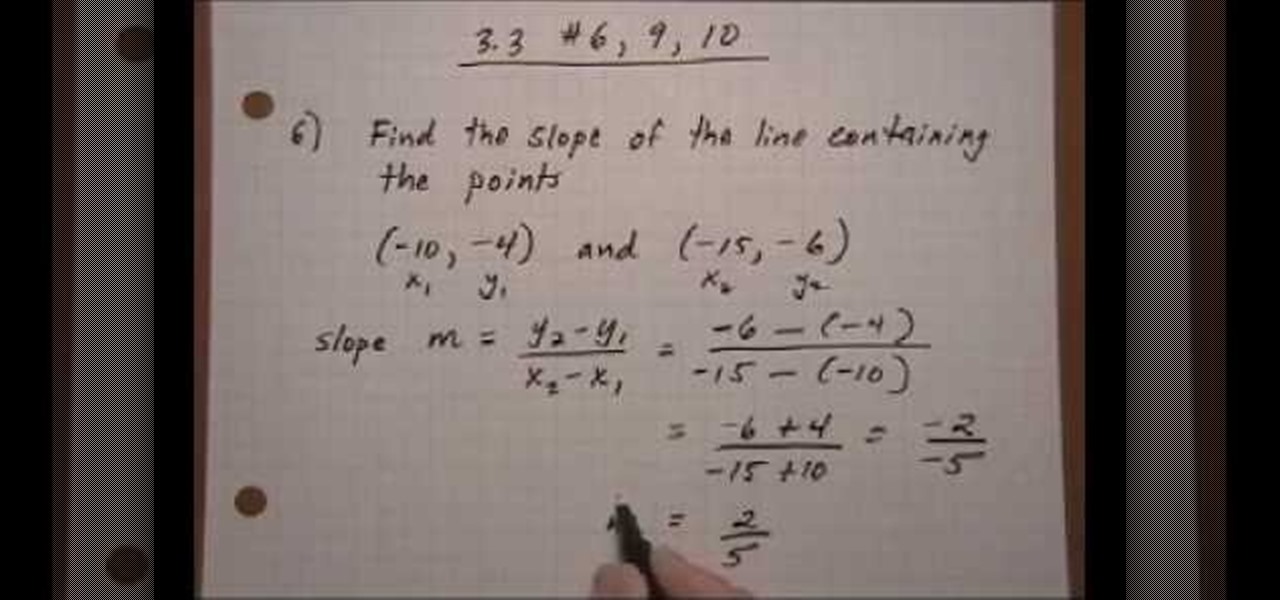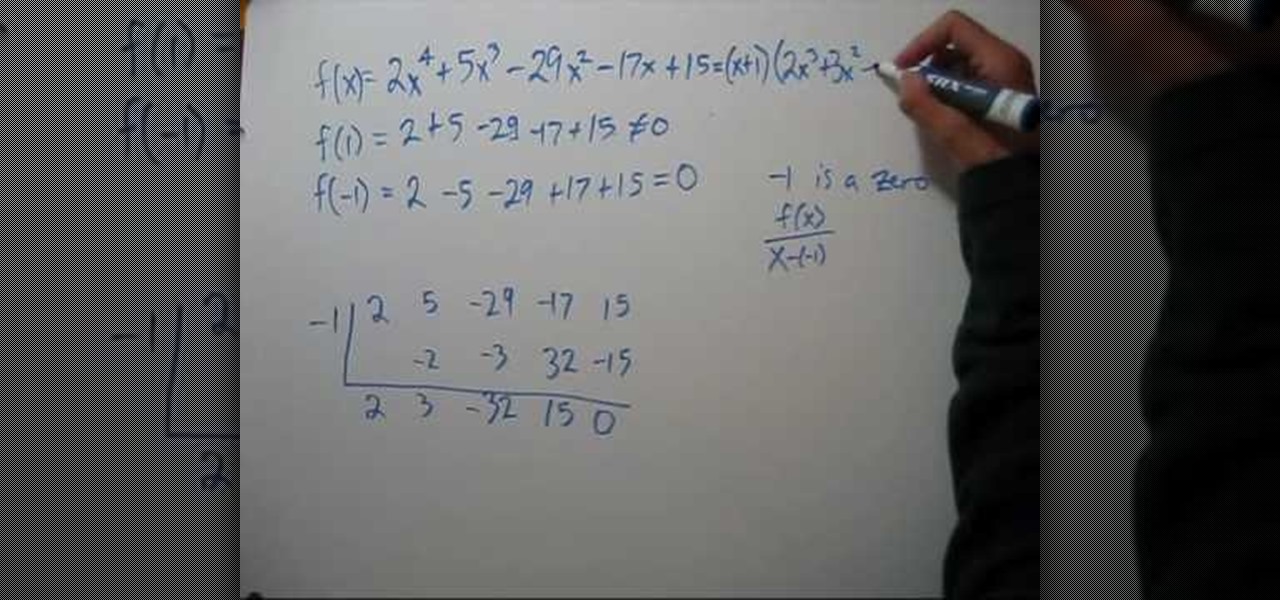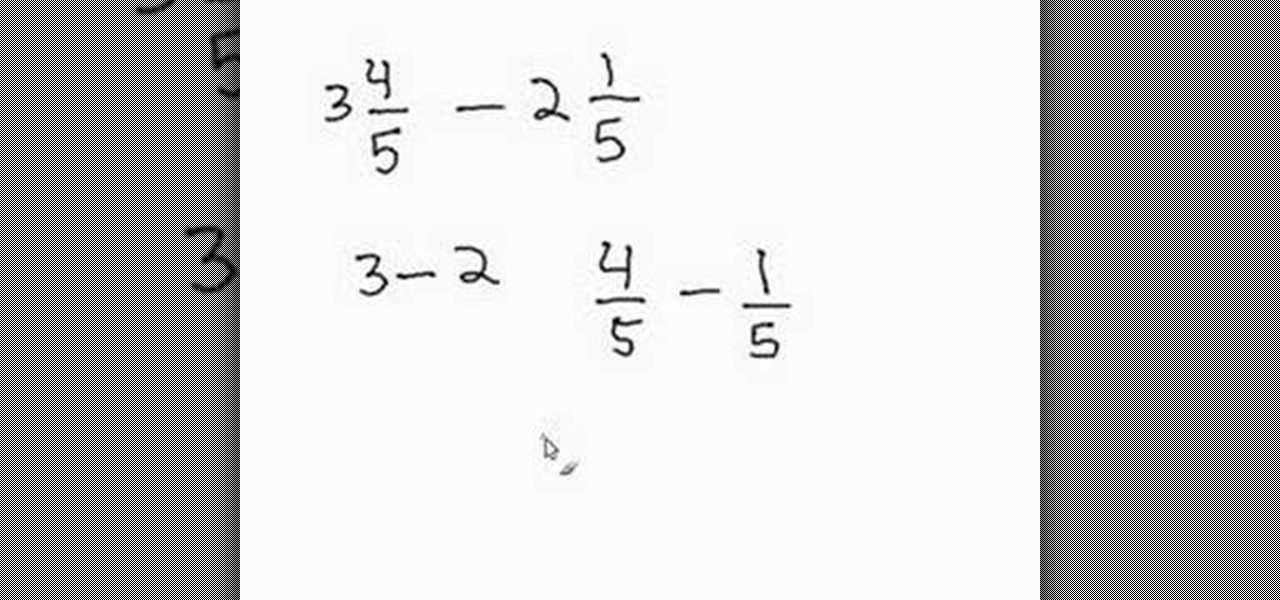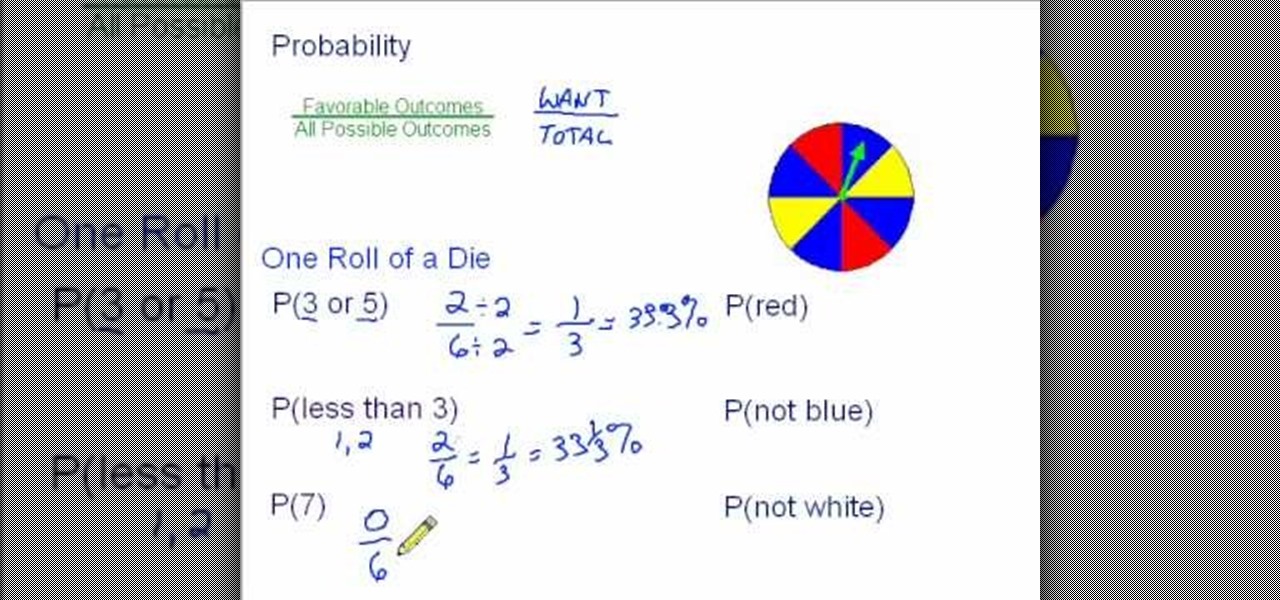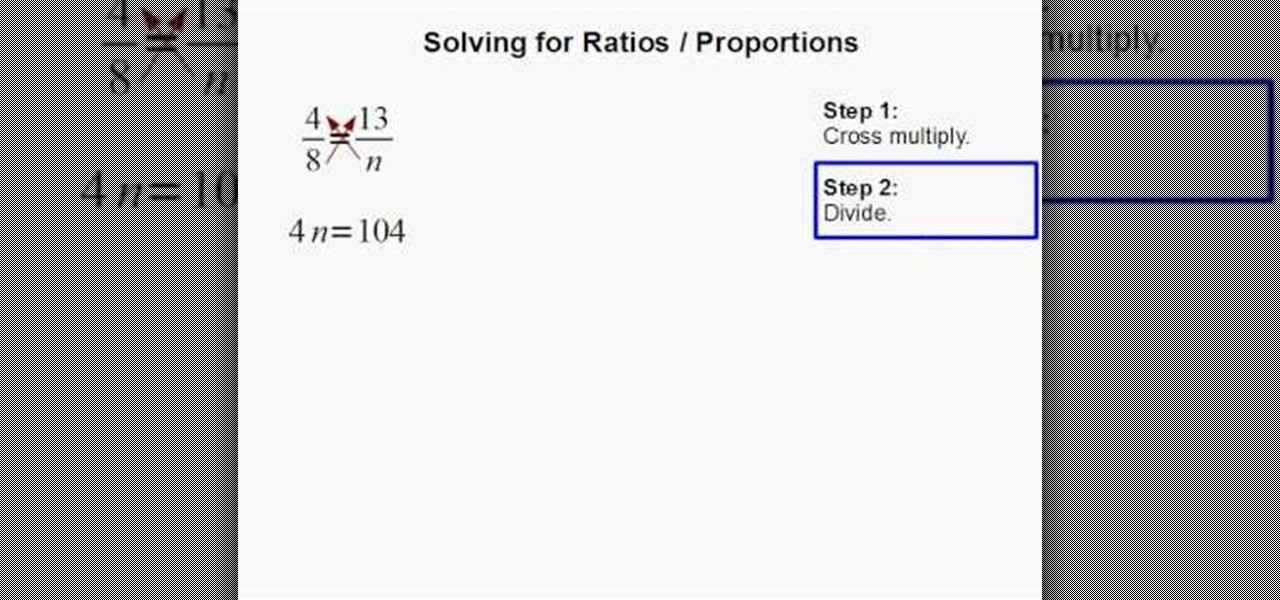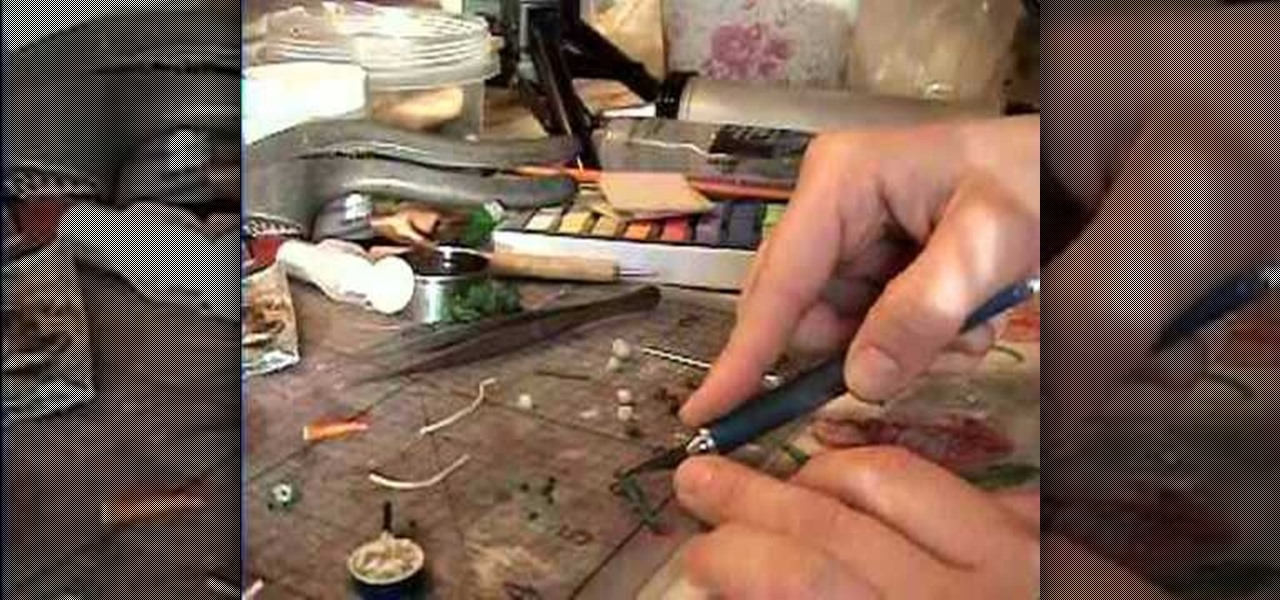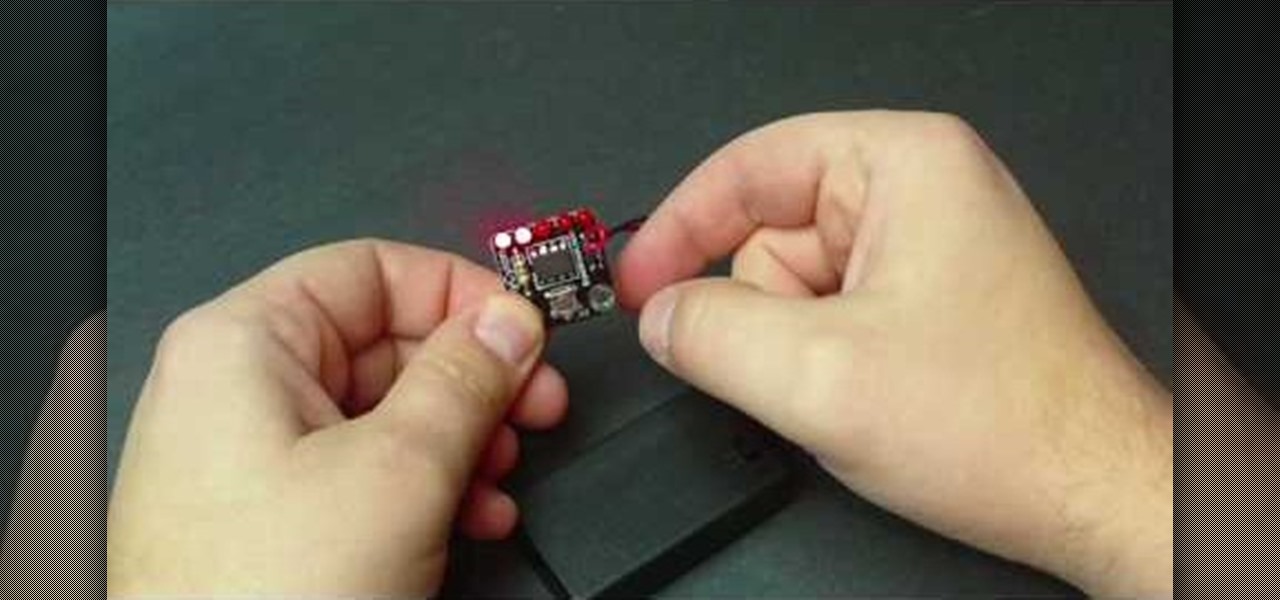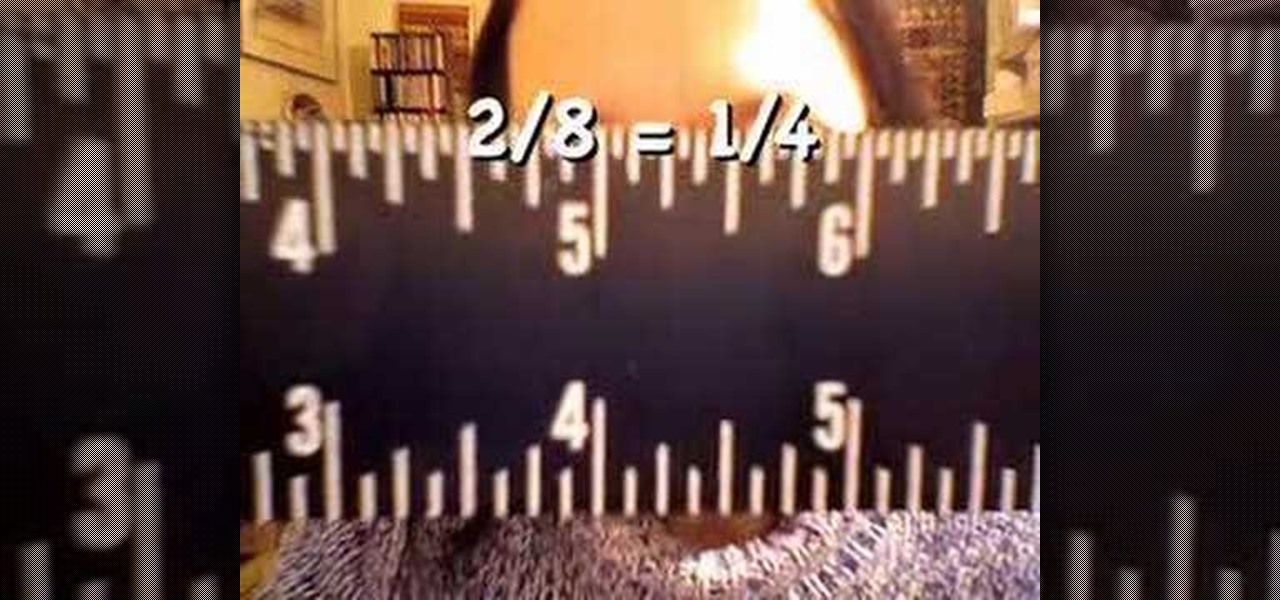
In this video, we learn how to read a ruler. First, grab you ruler and look on the top and the bottom of it. The top is divided into different marks that shows inches, half inches, and quarter inches. If you aren't familiar with reading this, just use the markers at the top to help you count between 1/4, 1/2, 1/8, etc. The other side of the ruler is used for centimeters, which you usually will not use in the United States very often. Learning how to read a ruler can help you get better with f...
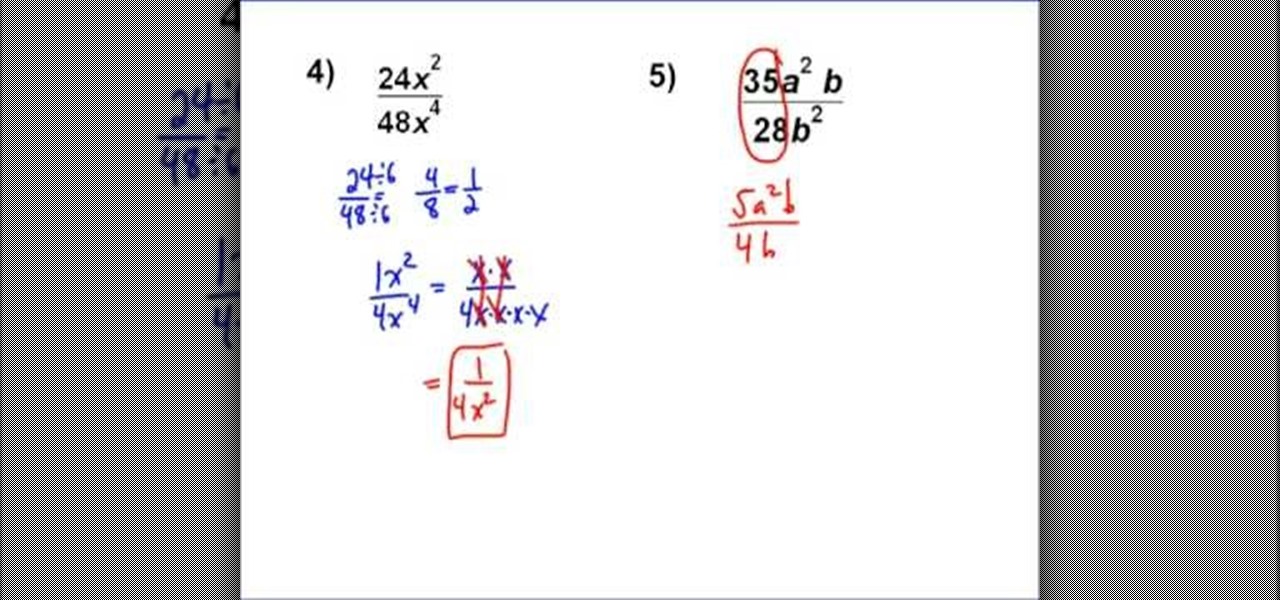
In order to simplify complex variables, you must first consider the numerical values separate from the variable. In the case of 24x/48x, you would look at the numbers alone to see if they have any factors. These numbers have the number 6 in common. So, divide it by 6. This will give you 4/8. This still requires some simplification. Two is still a factor for both. So, divide it again by four. This will give you 1/2. Now, if the numerator was raised to the second power, in the original equation...
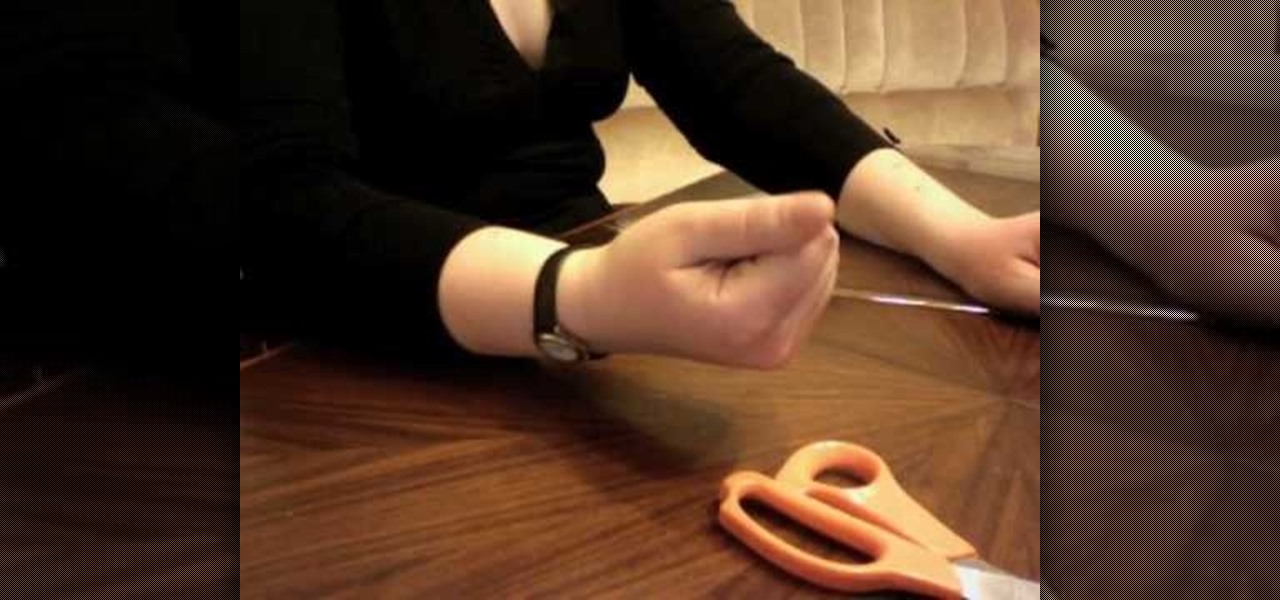
Piping cones are indispensible when applying flowers, leaves, and frilly trims on cupcakes and cakes, and cones with particularly fine points can be used to apply henna in intricate patterns.

From time to time, toilets can be worn out and eventually break, resulting in repairs. Now calling a handyman or plumber is fine, but why spend so much money for something that you can easily do for fraction of what they would charge you? In this tutorial, you'll find out how to fix a toilet's tank. There can be many different problems that go on in a tank, but this is one of the most common problems. So check it out and good luck!
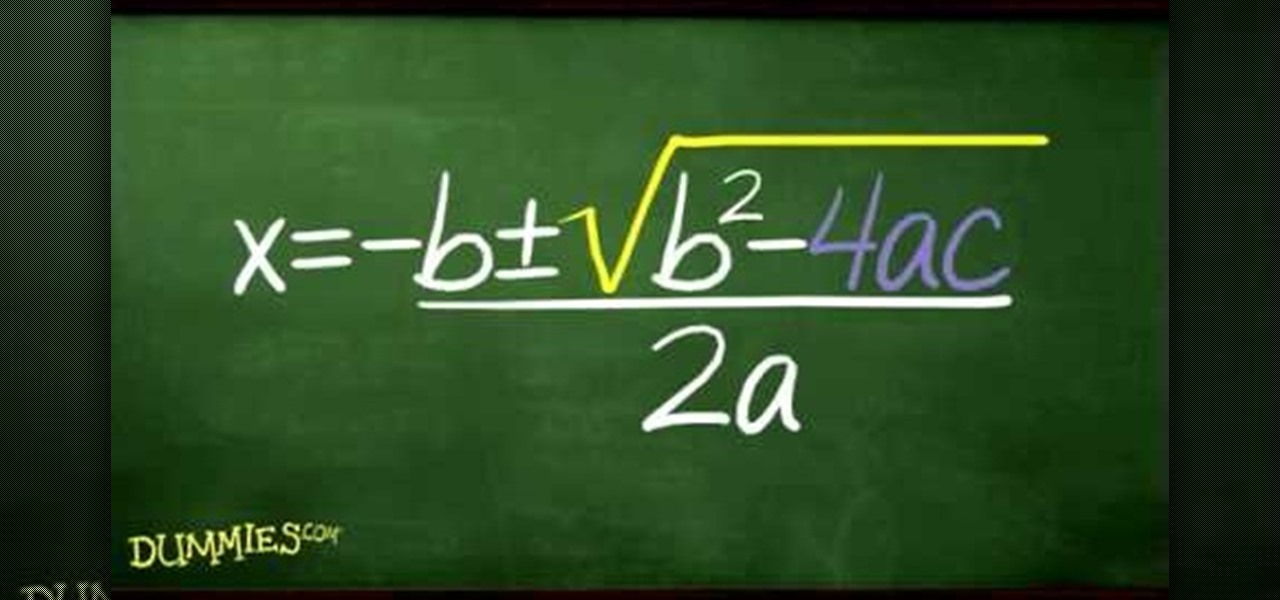
Using the quadratic formula to solve equations may bring one, two, or no algebraic solutions. The quadratic formula is special to quadratic equations, which can have fractions, radicals, or neverending decimals. Learn how to solve quadratic equations using the quadratic formula with this free video algebra lesson. From Ramanujan to calculus co-creator Gottfried Leibniz, many of the world's best and brightest mathematical minds have belonged to autodidacts. And, thanks to the Internet, it's ea...

They may not come in sparkly, 24K packages like department store brands, but drugstore beauty goodies can often perform just as beautifully for a fraction of the price. You just have to know which particular drugstore products work.

This how-to video shows you how to use the text substitution feature in Mac OSX. This will make it easier for you to type symbols and fractions. It can also be used to create shortcuts for texts that you use on a regular basis. Go to apple and system preferences. Click language and text and select the text tab. You will see some substitutions already created. To add a substitution, click add and type the text you want to replace. Press tab to add the text you want to replace it with. Save thi...

A square root of a number is a value which when multiplied to it self gives you the original number. The square roots of perfect squares are whole numbers. Like square root of 9 is 3, because 3 times 3 is 9. Similarly square root of 81 is 9 because 9 times 9 is 81. Others numbers do not have a perfect square root and in those cases you can only simplify the number to an extent. So to find out the square root of any number first you need to factorize that number. Factorize the number into smal...

This video is an instructional guide about Graph Linear Equations presented in algebraic form. It is an easy to follow, step by step guide to solving such equations using the graph intercept formula. The first example equation is Y = 2x -1 over y = mx + b. The video then shows you how to breakdown the equation into manageable sums using fractions to represent the data, and then presents the formula for interpreting the answer from these sums onto the graph co-ordinates. The second and third e...

Radicals are square roots which are not integers; the square roots of 2 or 3 are examples of radicals. The presenters show simple ways of how to add and subtract such radicals. They explain that by using the method of factoring, the addition or subtraction is made very easy. If the square root of 8, for instance, is in some addition sum, it can be factored into the square root of 4 times the square root 2. Since we know that the square root of 4 is 2 this can be simplified to be 2 times the s...

This video shows the method to simplify expressions with different exponents. The video starts with the explanation of 16 raised to the power 1/4. This can be solved by taking the nth or the 4th root of 16 where n stands for the denominator of the fraction. Then the video explains 8 raised to power 4/3. This can be solved in two ways. First one involves taking the cube root of 8 and raising it to the power of 4. The second method involves converting 8 into 2 raised to the power 3 and taking t...

In this video the instructor shows how to derive a general equation for a line in Point-Slope form. The slope of an equation is the ratio of difference of y coordinates to the difference of x coordinates. In other words, slope is the change of y up on change of x. So you have the basic slope equation m = (y2 - y1)/(x2 - x1). When you have fractions you can simplify them by multiplying the denominator to the numerator on both sides. So multiply the equation by (x2-x1) on both sides. This gives...

In this video the instructor shows how to add and subtract rational expressions. When you have an addition or subtraction problem of rational expressions, first look and compare the denominator of all the terms. If all of them have the same denominator then the expression can be written as a fraction whose denominator is the original common denominator and whose numerator is the sum of numerators of all the other terms. Simplifying the numerator by adding and subtracting the like terms gives ...

This video shows the method to add rational expressions with different denominators. The first step in this process involves finding the LCD. After this is done, the numerator and denominator are multiplied by a specific number so that the fractions are rewritten with common denominators. In the second step the numerators are added or subtracted according to the problem with LCD in the denominator. Simplify the numerator by adding or subtracting like terms. After this, we get a rational expre...

This video explores how to get the limit by getting a common denominator. When you try and plug in a limit, for example when the denominator goes to zero, you can get yourself into a situation where you get the answer (0/0) which is mathematically irrelevant. To solve this problem, you must find a common denominator and split the problem up into its various parts. By setting common denominators in the numerator, you can then flip the fraction around allowing you to properly calculate the limi...

This short video shows basic math integer division. It shows examples of how dividing a positive integer with another positive integer will yield a positive result, whereas diving a negative integer with a positive integer will yield a negative result. This exemplifies the fact that when the signs are different in division, the result will always be negative. This video can definitely help young math students get a better grip of basic integer division and thus have a stronger footing from wh...

To find the slope of a line you must have two points and then you must plug in the two points into the slope formula. The slope formula is m= y2-y1 over x2-x1. If the slope is a fraction be sure to reduce to the lowest. Remember if a number is divided into zero it is zero, if zero is divided into the number it is undefined. A calculator can help one remember this. Horizontal lines have slopes and vertical lines do not. Drawing the lines on a graph can help you see the actual slopes and which ...

This is the video about how to Factor & find zeros of a polynomial. How did I know that x=1 and x=-1 were roots of the polynomial. Suppose the polynomial has a rational root, let's call it. I will assume that p and q are co prime, i.e., the fraction is reduced to lowest terms. What we will be doing is somewhat similar to "factoring by guessing" of quadratic polynomials. Since is assumed to be a root of P(x), we know that if we multiply both sides by, we obtain: Transfer them to the other side...

In this tutorial the instructor shows how to subtract mixed numbers with common denominators. He explains the method using an example. He does this by subtracting the whole numbers separately and also subtracts the fraction parts separately. Now he finally puts both those results side by side and if the obtained result is not further deductible, it gives us a new whole number which is our desired result. If you want to learn how to subtract mixed numbers with common denominators watch this tu...

This is a very basic overview of probability, possibly intended for an eleven year old. It is a very good introduction to probability for one that has never encountered probability before. The instructor is not always clear in his intentions. Someone watching this video would learn about probability, ratios, percentages, and fraction. There is a set of required knowledge to understand what the instructor is talking about. The instructor uses very nice diagrams and also gives nice explanations...

When dealing with brackets in polynomial problems the first thing you need to notice is if there is a negative sign before the bracket. If there is not then all you need to do is get rid of the bracket and combine similar terms. If there is a negative sign then you need to multiply everything inside the bracket by a negative 1. This will change all of the signs inside the bracket. This video is a quick demonstration that will help you when completing these problems.

In this tutorial the instructor shows how to solve ratios and proportions. He gives a two step approach to solve an equality of two fractions in which the value of a variable in unknown. He says that in the first step we should cross multiply the numbers across the diagonal. In the second step we need to divide and simplify to get the value of the unknown variable. This video gives a simple two step method on how to solve ratios and proportions.

Convert percents to decimals: To convert percents to decimal involves simple three steps. For example to converting 125% the following steps are:

In this video tutorial the instructor shows how to solve a single-step equation by taking the reciprocal. He says that in the equations of fractions containing a variable on the one side, you multiply the reciprocal of its numerical constant to it so that only the variable x stays out. Similarly we need to multiply the reciprocal value that we used on the left hand side on the right hand side too to maintain the equality. Now after simplification as only x is left on the one side we get its v...

The author in this video explains the concept of fundamental rule of proportions. Fundamental rule of proportions means cross multiply. He explains that to arrive from an equation which has fractions into the one without equation multiply the top of left side with the bottom of right side and equal it with bottom of left side multiplied with top of the right side. In this way proportions can be cross multiplied to arrive at an algebraic expression. If you want to master the rule of proportion...

Create the perfect kitchen accessory for your doll house! Learn how to make a realistic bowl of chicken noodle soup with this informative video! Use an old garlic press with some noodle colored clay. Squish the noodles through the press and slice them off with a razor blade. This gives a nice pile of noodles. Flatten the noodles by rolling them with the end of a pencil. Once they are flattened you can fill up the bowl with the noodles. Next take some pea green colored snake and cut off tiny p...

If you live in a big city, chances are your bathroom isn't as big as you'd like. If you've had enough, watch this video to learn how you can maximize the space in you tiny bathroom by storing things more efficiently and even painting.

If the exposure for your camera is just a tiny bit off, the skin tone for your shots will be terribly off. You can use an 18% grey card to determine correct exposure, which is useful for setups when you are doing self-portraits or similar projects.

The ultimate in repurposing fashion. Start with an empty, clean paper coffee cup. Then cut off the rim, make your own brim and then paint and add your favorite decorations and accessories. You'll end up with a lovely neo-Victorian or steampunk tiny top hat!

Unless you happen to be the real life version of Hayden Christensen's character from the movie "Jumper," who has the magical gift of teleportation, traveling from one place to another simply by will is a power restrained to science fiction novels and movies.

Gnats are disgusting little bugs that make life a living hell on Earth. When surrounded by an entire swarm of them, they can be around your face , going inside your nose, ears, mouth and be really big pests for such tiny insects. This tutorial will show you how to get rid of the gnats using some vinegar. So sit back and enjoy!

One of the most basic parts of gymnastics is using the balance beam. In this tutorial, learn a few different routines that you can perform on a beam and how to get started. Balancing on a tiny stick may seem scary, but it is really quite easy once you get the hang of it. So, if you are a beginner or aspiring gymnast, follow along and learn all about beams.

This Hurricane Stainless Steel Manual Wheatgrass Juicer video demonstration and review from Health Banquet will show you the different parts of this best manual juicer, how to assemble the Wheatgrass Juicer and how simply it juices wheatgrass and barley grass. With this durable, tiny, and easy to clean Hurricane Manual Juice Extractor, you will easily be pulling in this nutritious wheatgrass juice into your diet.

Say GoodBye To Those annoying tiny dots on your LCD TV, display, computer screen or laptop display. It is all possible, in a single click.

This week I made the tinyCylon kit from the Maker Shed. It's a fun little project that has a lot of cool light patterns programmed onto the chip. this is a tiny programmable robot from Make Magazine.

If you’ve got an old floppy disk, you can create a tiny replica of the Starship Enterprise. You will need an old floppy disk, sturdy scissors or a wire cutter, and invisible thread.

Need to carry your baby, but don't have your sling or baby kangaroo handy? Then watch this how to video to learn how to use a just about anything as a baby carrier in an emergency. You can use a towel, t-shirt, or a pair of stretch sweat pants. This particular demonstrations shows how to use your shirt to carry your tiny baby during an emergency.

In this origami instructional video you can learn how to fold an origami star.

Dressing a baby is a piece of cake—that is, after you’ve mastered a few tricks for maneuvering her head and limbs through those tiny neck and arm and leg holes.

Sammi demonstrates how to ice skate. You have to take tiny steps back and forth to start. You need to lean forward also because otherwise you will fall and hit your head.










